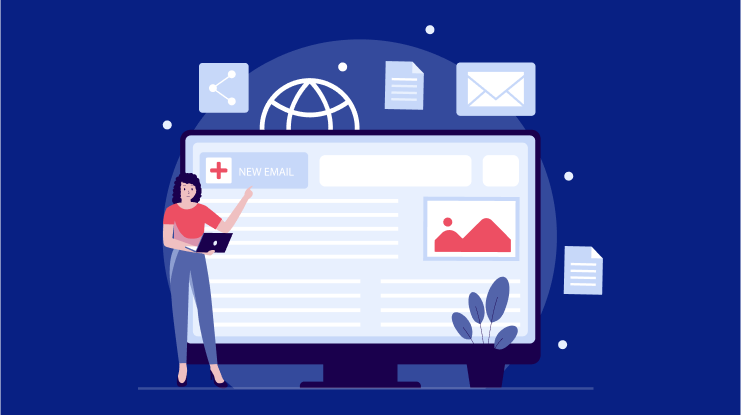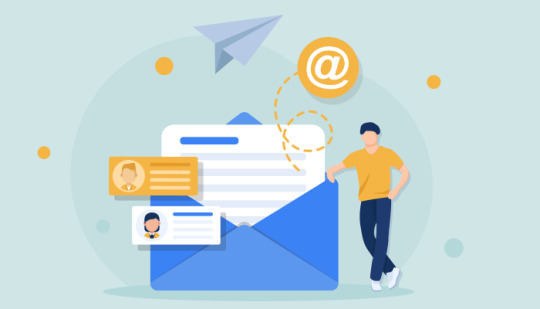The Ultimate Guide to Personalized Email for Every Marketer
Personalized emails are the best way to not only reach your audience but grow your business. Get this guide for all of the tools and tips you need to create personalized emails that convert.

Consumers, both online and offline, have evolved to demand and expect relevant and tailored content and experiences.
Marketers are attempting to satisfy these needs by leveraging email personalization to progress toward 1:1 interactions that not only meet, but surpass, customer expectations and set them apart from the competition. That's why, when asked to prioritize one capability that will be most important to marketing in the future, 33 percent of marketers said ""personalization."" Furthermore, 74 percent of marketers say targeted personalization increases customer engagement, and they see a 20 percent increase in sales when using personalized experiences.
What is Email Personalization?
Email personalization is simply the process of creating email content that’s tailored to an individual recipient.
In the early days of email marketing, personalization was as simple as adding a recipient’s first name to the subject line of your email blast.
In the modern world of email marketing, personalization has been taken to new levels. Some of today’s marketing automation tools allow businesses to tailor email content to recipients based on their behaviors and interactions with your brand.
You can now create emails that are hyper-personalized based on a recipient’s:
- Purchases
- Abandoned items in their shopping cart
- Clicked links
- Downloads
- Sign-ups
- Survey responses
- Actions on your website
In addition to content, you can also personalize email subject lines, email addresses, and “from” names to tap into the proven benefits of personalization on a larger scale.
The Three Traits of a Truly Personalized Email
Personalization is not, however, simply a generic greeting and customer name. To be truly personalized, an email must be relevant, timely, and come from a person.
Relevant
Relevance is critical when personalizing an email. The customer must believe that the message is meant specifically for them, and that it is tailored to their interests.
To ensure that the email is truly relevant to the customer, businesses must use customer data and segment their mailing lists accordingly. This customer data can be collected through website activity, purchasing history, customer surveys, and more.

Timely
Timeliness is also important when personalizing an email. The customer must believe that the message is timely and that it is relevant to what is happening in their life at the moment.
To ensure that the email is truly timely, businesses must send messages that are relevant to the current season, current events, or the customer’s current situation.
Comes From a Person
Finally, a truly personalized email must come from a person. The customer must believe that the message is coming from a real person who cares about them and their situation.
To ensure that the email comes from a person, businesses must use a personal email address, sign the email with a real name and provide a phone number.
The best way to ensure that each email is personalized is to use a customer relationship management (CRM) system. This system allows businesses to track customer interactions and create a history of each customer.
5 Best Practices for Personalized Emails
1. Set Your Goals
Before you start collecting data, it is important to set your goals. What do you want to achieve with your data? How will you use it to improve your marketing efforts? By setting clear goals, you can ensure that you collect the right data and that you use it effectively.
2. Collect the Right Data
There is a lot of data out there, but not all of it will be useful to you. It is important to collect data that is relevant to your goals and that you can actually use to improve your marketing. Otherwise, you will just be wasting your time and resources.
3. Ensure You Follow Data Compliance Laws
There are laws in place to protect people's privacy, and you must ensure that you comply with them when collecting and using data. If you don't, you could face hefty fines or even jail time.

4. Use Friendly-From Names
When you send out emails or other communications, be sure to use friendly-from names. People are more likely to open and read communications that seem to come from a person rather than a faceless company.
5. Have a Personalization Faux Pas Fall Back
Even if you are careful about collecting and using data, there is always a chance that something could go wrong. It is important to have a plan in place for what you will do if you accidentally send a communication to the wrong person or if you use someone's data in a way that they don't like. Having a fallback plan will help you to avoid any major disasters.
Conclusion
Personalized emails are a powerful marketing tool that can help businesses improve their customer relationships and boost their bottom line. When used correctly, personalized emails can increase customer engagement, conversion rates, and brand loyalty. However, it is important to use personalization judiciously and not overdo it, as this can make customers feel spammed or unimportant. The key is to strike the right balance to create meaningful and lasting relationships with customers.
What better way to deliver a more personalized experience than using technology? Personalize.cc is the best personalization software in the market today. When you sign up to Personalize.cc, you'll have access to unlimited possibilities, personalized videos, images, and automated personalized emails for your business. Sign up today so you can turn every email into a unique experience through our hyper-personalization feature.
What Makes the Best Personalization Software?
Join the SaaS Revolution
-
All-in-One Suite of 50 apps
-
Unbelievable pricing - â¹999/user
-
24/5 Chat, Phone and Email Support
Infinity Suite
Tags
